-
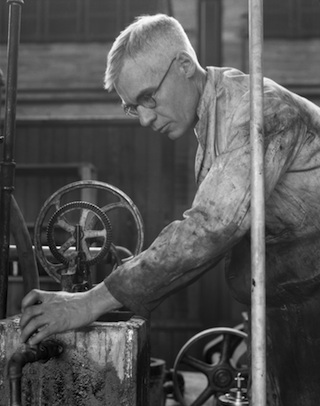
Karl Clark begins his long career investigating Alberta's oil sands.
Karl Clark at work on his prototype separation plant, 1929
Source: Glenbow Archives, ND-3-4596a
-
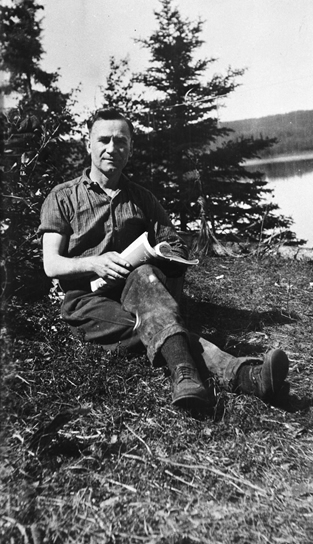
Robert Cosmas Fitzsimmons visits the Athabasca River and purchases an oil lease.
Robert Fitzsimmons at Bitumount, ca. 1920s
Source: Provincial Archives of Alberta, A3358
-
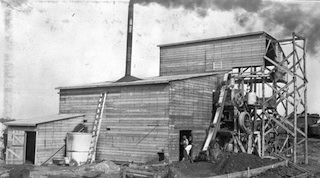
Karl Clark and Sidney Blair build prototype hot water separation plants.
Oil sands separation plant at Dunvegan Yards, Edmonton, 1925
Source: Provincial Archives of Alberta, A3526
-
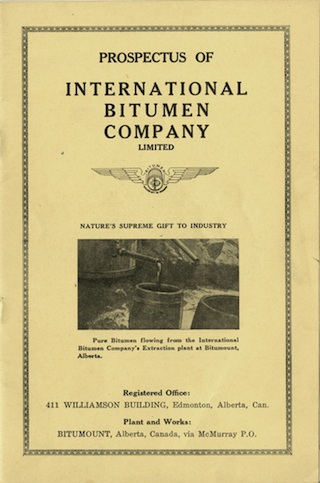
International Bitumen Company is incorporated.
Prospectus for the International Bitumen Company, n.d.
Source: Provincial Archives of Alberta, PR1971.0356.544a,b.ProspectusOf.IBC.1
-
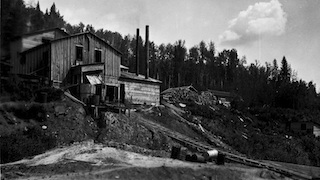
Clark's hot water separation plant moves to the Clearwater River, near Fort McMurray.
Oil sands separation plant on the Clearwater River, 1930
Source: Provincial Archives of Alberta, A3536
-
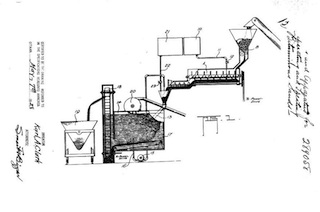
Clark is issued Patent 289058 for "Bituminuous [sic] Sand Processing".
Diagram of the process patented by Clark in 1929
Source: Canadian Intellectual Property Office, Patent 289058
-
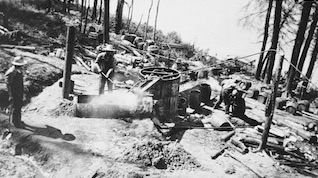
Fitzsimmons builds his first separation plant at Bitumount.
Fitzsimmons' separation plant, Bitumount, ca. 1930
Source: Provincial Archives of Alberta, A3383
-
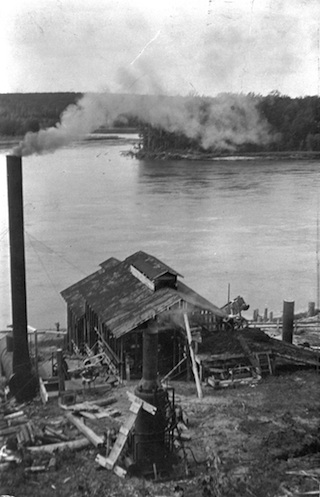
Fitzsimmons builds a new plant designed to produce 200 barrels of oil per day, but it runs for only a short while.
New plant at Bitumount, n.d.
Source: Provincial Archives of Alberta, A3378
-
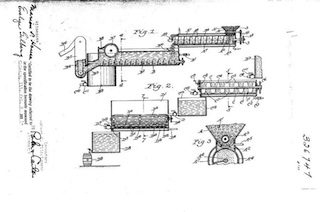
Fitzsimmons is issued Patent 326747 for a “Process and Apparatus for Recovering Bitumen.”
Diagram of Fitzsimmons' patented separation process, 1932
Source: Canadian Intellectual Property Office, Patent 326747
-
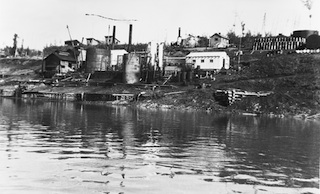
Fitzsimmons builds a refinery at Bitumount.
The International Bitumen Company plant, Bitumount, ca. 1937
Source: Provincial Archives of Alberta, PAA A3375
-
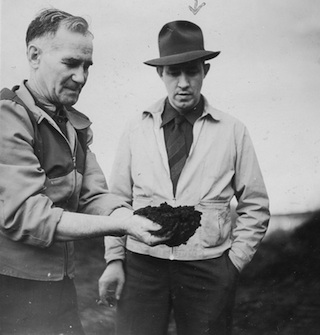
Montreal financier Lloyd R. Champion buys controlling interest in International Bitumen Company and changes name to Oil Sands Ltd.
Fitzsimmons (left) shows Champion the oil sands at Bitumount, n.d.
Source: University of Alberta Archives, 83-160-113
-
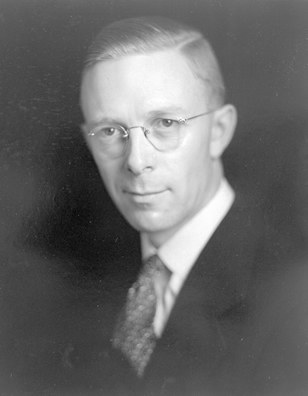
Ernest Manning, Premier of Alberta, announces a loan of $250,000 to Oil Sands Ltd. to build a prototype oil sands separation plant at Bitumount.
Ernest Manning in 1943
Source: Provincial Archives of Alberta, A483
-
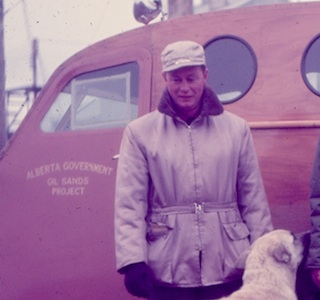
Agreement with Oil Sands Ltd. is cancelled. The Bitumount project becomes known as the Alberta Government Oil Sands Project.
Alberta Government Oil Sands Project, Bitumount, 1952
Source: University of Alberta Archives, 91-137-127
-
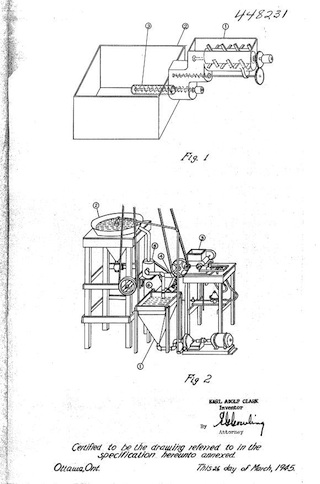
Clark is issued Patent 448231 for “Extracting Oil from Bituminous Sand.”
Diagram of process patented by Clark in 1948
Source: Canadian Intellectual Property Office, Patent 448231
-
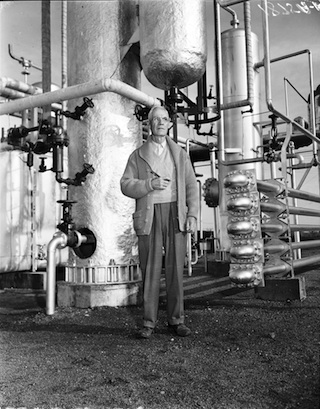
Alberta Government Oil Sands Project plant at Bitumount is completed.
Karl Clark at the completed Bitumount plant, n.d.
Source: Provincial Archives of Alberta, PA410.3
-
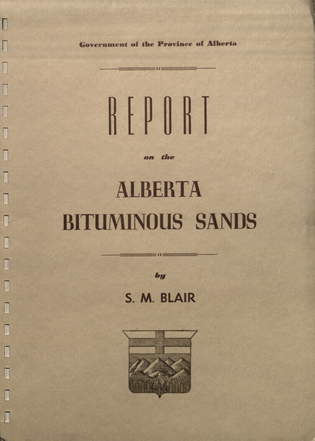
Blair Report indicates that developing the oils sands could be profitable.
Cover of Blair's Report on the Alberta Bituminous Sands, 1950
Source: Provincial Archives of Alberta, PR1971.0345.box24.503
-
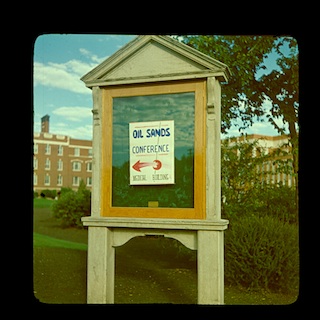
Over one hundred delegates attend the Athabasca Oil Sands Conference at the University of Alberta.
Poster on the University of Alberta Campus, 1951
Source: University of Alberta Archives, 91-137-122
-
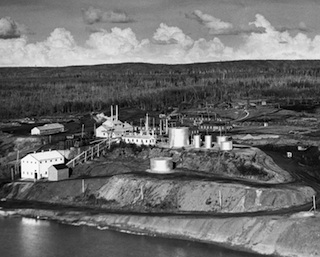
Government of Alberta puts the Bitumount plant and 5,784 acres up for sale, but does not receive any adequate bids. The plant remains non-operational.
Bitumount, ca. 1949-1950
Source: Glenbow Archives, pa-1599-451-2
-
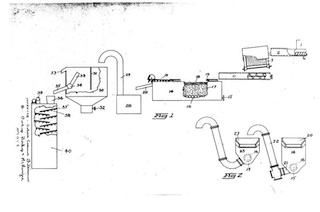
Fitzsimmons is issued Patent 493081 for a “Process for Recovering Bitumen from Tar Sands”.
Diagram of Fitzsimmons' patented 1953 separation process
Source: Canadian Intellectual Property Office, Patent 493081
-
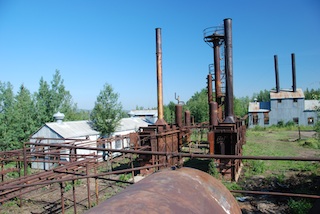
Bitumount plant is sold, but no significant development occurs and it is finally abandoned in 1958.
The Bitumount site became overgrown in the years following its abandonment.
Source: Historic Resources Management, DSC_1720
-
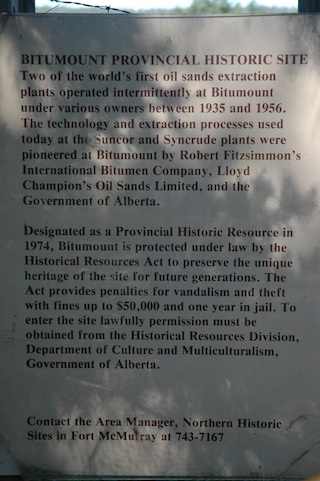
Bitumount is designated a Provincial Historic Resource.
Sign at the Bitumount site, 1980s
Source: Historic Resources Management, DSC_5896